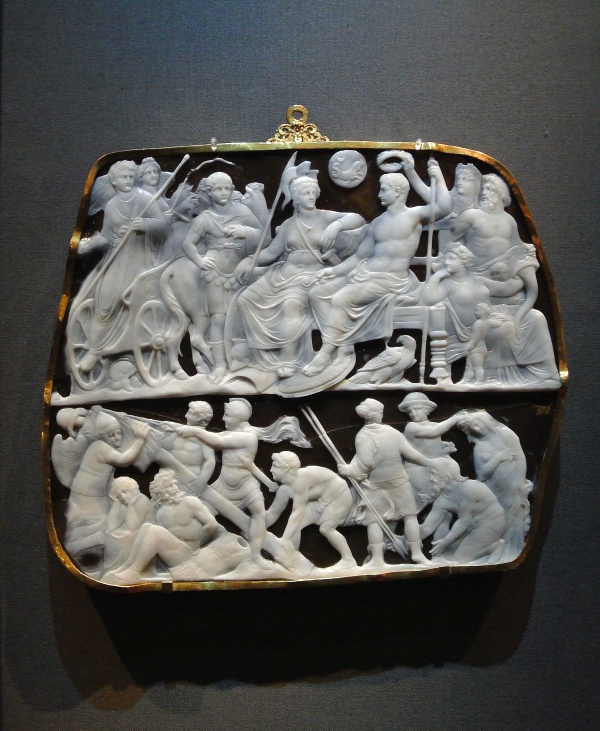Facts About Gemma Augustea
The *Gemma Augustea* is a stunning piece of ancient Roman art, meticulously carved from a double-layered Arabian onyx stone. This low-relief cameo gem is believed to have been created by Dioscurides or one of his disciples in the 1st century AD. Measuring 7.5 inches tall, 9 inches wide, and 0.5 inches thick, it showcases exceptional craftsmanship, with finely detailed images that interact beautifully with light and shadow.
Originating from the court of Caesar Augustus, the *Gemma Augustea* may have been crafted for a prominent family in a Roman province or a client kingdom. The gem is divided into two registers, each filled with intricate scenes and figures.
In the upper register, there are depictions of Augustus, Oikoumene (the personification of the inhabited world), Oceanus, Roma (the personification of Rome), and Victoria (the personification of victory), among other symbolic figures. This composition blends Roman, Olympian, and civic elements, portraying Augustus in a god-like manner, surrounded by symbols of power and victory.
The lower register illustrates the erection of a tropaion (a trophy commemorating victory), with figures representing prisoners of war, gods, and mythological beings. This scene symbolizes Roman victories and the aftermath of battles, depicting prisoners awaiting their fate.
The identities and symbolism of the characters in these scenes have been widely debated by scholars. The upper scene elevates Augustus to a divine status, underscoring his power and the prosperity of Rome under his rule. The lower scene, in contrast, focuses on the consequences of military triumphs, highlighting the prisoners and the spoils of conquest.

 Slovenia
Slovenia